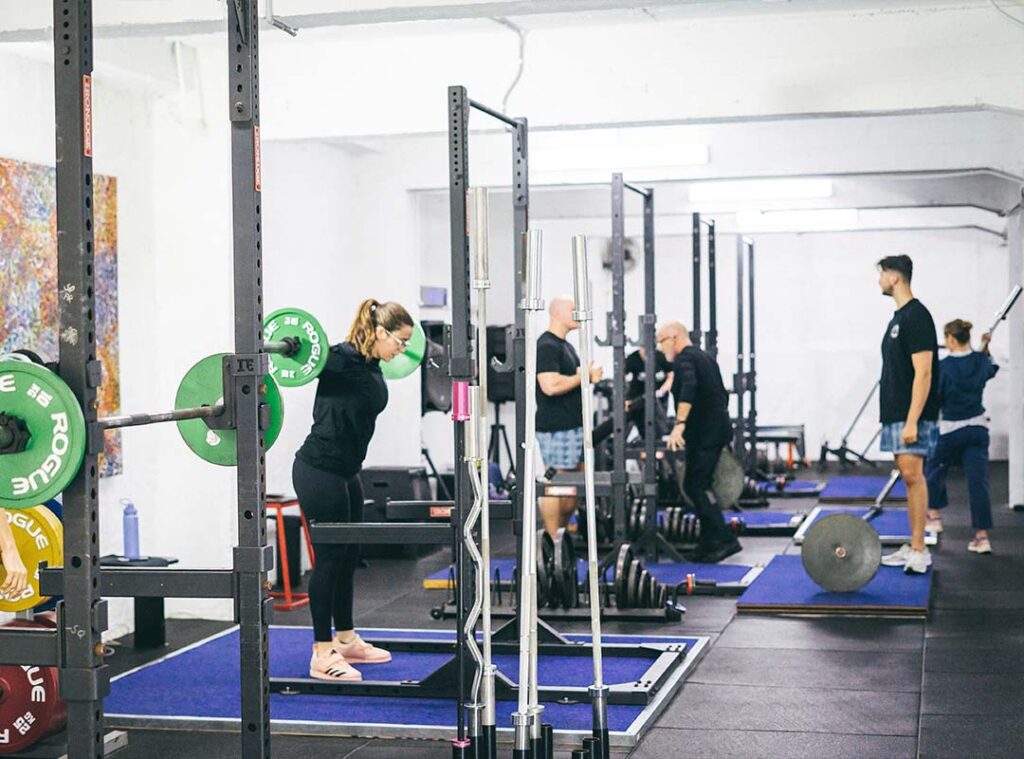Your time matters to us. In this busy world, Return on Investment is a crucial metric to determine in its simplest form, if something is worth your time. It can be overwhelming surfing social media and the online fitness space in search of the right fit for you. With “strength training” being a bit of a buzzword, finding a trainer, studio, gym or system that promises to deliver strength training isn’t uncommon. If your goals are building muscle, improving bone density, increasing fitness and being Stronger For Life, strength training is non-negotiable. However, how do you know that you’re getting what you paid for? Does turning up for a class or personal training session guarantee the results you’re after? Today let’s dive into what strength training involves so you can make sure you’re getting what you want.
What Strength Training is
Strength Training is really just “Progressive Resistance Training”. There are many ways to write an effective program, a variety of resistance types and exercises to use and a wide range of responses to training that individuals can have. That being said, we can’t fairly lump all workouts under the category of “strength training” proper. Picking up and moving a load from point a to b might require “strength” but a group class with short rest periods and no progression wouldn’t be categorically considered “strength training”, despite how it’s advertised. So rather than dwell on what it’s not, let’s list what Strength Training “is” below:
- Adheres to generally agreed upon principles informed by both scientific evidence and practical experience
- The thoughtful and deliberate selection of tempo, sets, reps and frequency
- Has the appropriate distribution of exercise variation and exercise variety depending on a program phase and client goal/s
- Consideration of training intensity relative to goals and current level of fitness
- A planned progression of these variables facilitated by the program over a specific period of time
- The flexibility to accommodate individual performance potential based on their daily readiness to train and perform, especially in relation to prior efforts.
How to make sure you’re getting stronger
Now that you know what Strength Training is, how can you make sure you’re actually doing it? In many ways the answer is self-evident, knowing what it involves will filter out many forms of exercise immediately, however, this doesn’t mean there aren’t subtleties to look out for. To begin with, many individuals as they embark on their health and fitness journey are relatively untrained. This means they are ripe to see rapid improvements after beginning. We call this “newbie gains”. This also means Pilates, Yoga and group fitness programs such as F45 may foster relatively rapid improvements in the first few months. This will include an increase in the number of reps performed, weight lifted, and distance covered. That ticks the box for “strength training”, right? Not necessarily.
To be clear, we encourage everyone to be physically active, but we also want people to have realistic expectations. The relatively rapid improvement represents someone adaptation to a task but, rarely do those aforementioned workouts deliberately program variables in an individualised fashion for long term progression or even track specific efforts for recall later. Have you ever gone to a Yoga class and been told “you held that pose for 50 seconds last week, now try for 60?”. As such “going through the motions” will gain initial results but yield ultimately diminishing returns. If building muscle, bone density, muscle and fitness is important to you, strength training proper is a must to ensure the training remains stimulating for your body. Training will involve the deliberate application of exercise principles to reach your goals.
We do things right at Sydney Strength Training
At Sydney Strength Training we take pride in helping you get Stronger For Life. We aren’t here just for a short-term transformation challenge (for someone to simply drop off once the motivation wanes). Instead, we are here to educate and foster long term health-promoting habits. Moreover, we want people to get the most out of their strength training. For many, building muscle, improving bone density and getting stronger are important goals. These goals take time to actualise and without structure, it’s easy to plateau. Without the correct attention to detail and consideration of the aforementioned variables and the ability to facilitate long term development, exercise will yield less than desired results. If you’re looking for expert coaching to help you actually see the results you want, reach out to us here.

